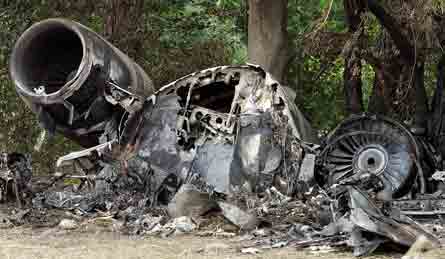Inquiry begins into why crew of Comair CRJ200 took wrong turning and air traffic controller did not see it happen
The pilots of a Comair Bombardier CRJ200 continued accelerating across fields when it became clear they had tried to take off from a runway that was far too short, apparently believing there was no alternative, the flight data recorder (FDR) has revealed. A witness says the aircraft briefly got airborne, but then hit trees and exploded, in the accident on 27 August.
The CRJ crew acknowledged air traffic control clearance to take off from Lexington airport's main runway 22 just before the taxi route to reach it crosses the threshold of runway 26, according to the US National Transportation Safety Board (NTSB).
|
|---|
| The CRJ200 briefly got airborne before hitting trees |
In the pre-dawn darkness just after 06:00, flight 5191 to Atlanta turned on to runway 26, a 1,070m-long general aviation runway, and began its take-off run, the NTSB has confirmed.
The FDR shows that the aircraft (N431CA) was still accelerating - but not airborne - when it ran over the runway end and through the boundary fence. A witness on the farm near where the CRJ200 came to rest says it was airborne, but hit trees and burst into flames. Of the three crew and 47 passengers, only the first officer survived.
Lexington Blue Grass airport, in Kentucky had one controller on duty, although Federal Aviation Administration regulations require two. The controller cleared the flight to taxi to the 2,130m-long runway 22 and, shortly after that, cleared it for take-off. Having passed the take-off clearance, the NTSB says, the controller occupied himself with "administrative duties". As the CRJ was crossing the runway 26 threshold en route to runway 22, the captain steered the aircraft left on to the runway and handed control to the first officer, who was the pilot flying.

Alterations to the main runway since 20 August mean that the taxi route to the runway 22 threshold had been modified, and neither of the pilots had used Lexington since then. The cockpit voice recorder (CVR) has revealed that during the take-off run one of the pilots remarked that the runway was unlit. Runway 22 was lit, according to the NTSB, and runway 26 crosses it.
The CVR indicates a normal pre-flight routine with neither pilot reporting any problems, and the weather and visibility were good.
Source: Flight International

















